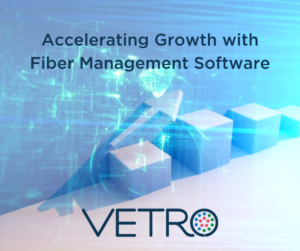The demand for high-speed, reliable internet is exploding. As a result, fiber optic networks are rapidly becoming the backbone of the digital age. For engineering firms tasked with designing these networks and internet service providers (ISPs) bringing them to life, efficiency and best practices are paramount. This blog delves into the key considerations for successful fiber network design, highlighting how fiber management software emerges as the most crucial tool for staying efficient throughout the entire process.
Planning the Path: Understanding the Needs
The first step is comprehensive planning. ISPs need to clearly define the network’s purpose and target audience. Is it for residential broadband, enterprise connectivity, or a mix of both? Understanding user needs dictates factors like fiber type, cable count, and network architecture (e.g., point-to-point, mesh).
Surveying the Landscape: Site Assessment and Regulations
Thorough site assessments are crucial. Engineering firms must consider existing infrastructure (underground ducts, aerial poles), potential environmental hazards, and regulatory restrictions. Obtaining permits and navigating right-of-way regulations can be time-consuming, so early planning is essential.
Designing the Backbone: Network Architecture and Equipment Selection
Network design involves crafting a physical and logical layout, considering factors like scalability, redundancy, and future-proofing for emerging technologies. Fiber optic cables come in various types (single-mode, multimode) with different transmission distances and functionalities. Selecting the right cable type and accompanying equipment (connectors, splicing enclosures) is vital for optimal performance.
Digging Deep: Construction Considerations
Construction methods depend on the chosen network path. Underground installations require trenching or boring, while aerial deployments involve poles and overhead lines. Engineering firms must factor in soil conditions, existing utilities, and potential weather hazards to ensure proper cable protection.
Documentation is King: Clear and Detailed Records
Detailed documentation is essential for future maintenance and upgrades. As-built drawings should meticulously record cable paths, splice locations, equipment placements, and fiber characteristics. Fiber management software becomes invaluable here, enabling the creation and storage of digital records with ease.
The Efficiency Edge: How Fiber Management Software Empowers Success
While the practices above establish a solid foundation, staying efficient throughout the design, construction, and maintenance phases requires a crucial tool: fiber management software. These software solutions offer a comprehensive suite of features that streamline every aspect of fiber network development.
Streamlined Design and Planning:
Fiber management software allows for importing of GIS data and satellite imagery, facilitating efficient route planning and visualization.
The software provides tools for cable length calculations, ensuring accurate material estimates and cost control.
Collaboration features enable real-time information sharing among design teams, ISPs, and contractors, minimizing communication gaps.
Enhanced Construction and As-Built Documentation:
Fiber management software allows for seamless integration with Computer Aided Design (CAD) software, facilitating the creation of detailed network layouts.
The software can be used to generate detailed cable schedules, equipment lists, and other essential construction documents.
Field data capture tools allow for real-time updates on construction progress, ensuring accurate as-built records.
Maintenance Made Easy: Efficient Network Management
Fiber management software provides a centralized platform for storing and managing all network data, including cable types, splice locations, and equipment details.
The software can be used to track network performance metrics, enabling proactive maintenance and troubleshooting.
Advanced features like network topology mapping offer a clear visual representation of the network, simplifying troubleshooting and future expansion planning.
The ROI of Efficiency: Cost Savings and Long-Term Value
Investing in fiber management software offers significant benefits that translate directly to cost savings and long-term value.
Improved efficiency in design and construction reduces project timelines and resource requirements.
Accurate documentation minimizes the risk of errors and facilitates easier maintenance, leading to reduced operational costs.
Enhanced collaboration fosters better communication and project management, leading to faster issue resolution.
The software creates a valuable data repository for future network upgrades and expansion, future-proofing the investment.
Building a Brighter Future, One Fiber at a Time
Fiber optic networks are the cornerstone of the digital future. By adhering to best practices and leveraging the power of fiber management software, engineering firms and ISPs can design, construct, and maintain efficient and reliable networks that empower businesses and communities. As the demand for bandwidth continues to grow, the importance of efficient fiber network development will only become more pronounced. By embracing these best practices and technological advancements, we can build a future where high-speed internet access is a reality for all.
About VETRO
At VETRO, we believe visualizing data unlocks hidden potential, radically simplifying the way businesses operate and digitizing the future of connectivity. We focus on empowering network operators with unparalleled clarity and control over their fiber networks, enabling them to move faster, better, and more efficiently than ever before. Our revolutionary platform isn’t just software – it’s the physical network asset system of record, offering unprecedented visibility and control from strategic planning to daily operations. We empower our customers to bridge the digital divide at a rapid pace, unlock unforeseen opportunities, and squeeze the maximum value from their networks. Let’s illuminate the unseen, digitize the way we connect, and shape the future of connectivity, together.





